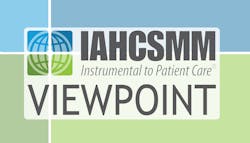FDA modifies medical device reporting process; UDI to play important role
The Food and Drug Administration (FDA) is taking steps to improve its ability to identify and address medical device safety signals and provide patients and healthcare professionals with important information that can be used to make better-informed healthcare decisions. To accomplish this, the FDA is updating its Medical Device Reporting (MDR) Program, which monitors device performance, detects potential device-related safety concerns or signals, and contributes to the benefit-risk assessment of medical devices.
The FDA announced in June it would formally end its Alternative Summary Reporting (ASR) Program. Under this program, manufacturers of some medical devices could request an exemption from the requirement to file individual medical device reports for certain events that were well-known and had well-established risks associated with a particular device and instead submit quarterly summary reports of such events. According to a June 21, 2019, statement from the director of the FDA’s Center for Devices and Radiological Health, the FDA granted 108 such exemptions to individual manufacturers for certain well-known events associated with specific devices, which were often already described in the product labeling available to healthcare professionals and patients. The ASR Program allowed the FDA to more efficiently review reports of well-known, well-understood adverse events, so it could focus on identifying and acting upon new safety signals and less understood risks.
Pinpointing potential risks faster
Beginning in 2017, the FDA took steps to formally sunset the ASR Program and to streamline medical device reporting by implementing the Voluntary Malfunction Summary Reporting (VMSR) Program. The VMSR Program allows the FDA to efficiently detect potential safety signals and free up resources to better address the highest risks, such as deaths and serious injuries, associated with medical devices. As the name suggests, this is a voluntary program that allows manufacturers to report certain device malfunctions in a summary form on a quarterly basis, rather than on an individual basis, for eligible device types. Reports from this voluntary program are publicly available in the Manufacturer and User Facility Device Experience (MAUDE) database. The MAUDE database maintains reports submitted by both mandatory reporters (manufacturers, importers and device user facilities) as well as by voluntary reporters such as healthcare professionals, patients and consumers. There are exceptions, however; reports of a death or serious injury are not allowed to be submitted via the VMSR Program and the FDA may still require individual malfunction reports instead of summary report for devices that are eligible for the program, such as when individual reports are necessary to address a public health issue.
The MAUDE reporting system will also undergo a change to make it more user friendly over the next few years as part of a broader effort to modernize the medical device program’s information technology systems. The objective of these improvements is to make MDR data more usable and easier to find. This effort is intended to increase transparency in medical device reporting.
Medical device reports submitted to the FDA are only one source used to monitor medical devices in use; however, there are some limitations to these reports. The FDA has identified that some submissions are incomplete, inaccurate, untimely and duplicative, and some include unverified or biased data. The modernized, active surveillance will use real-world data and is a primary focus for the FDA.
The FDA has been developing a new program called the National Evaluation System for health Technology (NEST) to systematically use real-world data to rapidly identify and help address safety signals once devices are in use through active surveillance. Active medical device surveillance will better protect patients by, for example, continuously using analytical software algorithms to evaluate large data sets on device performance and patient safety associated with device use in routine clinical practice.
UDI plays key role
An important part of this new surveillance system is the establishment of the unique device identification (UDI) system. The UDI requires medical devices are marked on their labels with a unique code that can be used to identify the device through its distribution and use in patients. Device identifiers are stored in a public database; currently, there are more than two million device records, and patients and healthcare professionals can download information about their devices. The FDA also has engaged in international efforts to facilitate a harmonized approach to adoption of UDI systems worldwide.
About the Author

Susan Klacik
Susan Klacik is a Clinical Educator for The International Association of Healthcare Central Service Materiel Management (IAHCSMM). She is the IAHCSMM voting member for the Association of the Advancement of Medical Instrumentation (AAMI), a role she has held since 1997. A member of the Association of perioperative Registered Nurses (AORN) Guidance Advisory Board. Klacik has authored numerous articles and served as a contributing author to the IAHCSMM textbooks. She is the author of the IAHCSMM magazine’s column “Inside Washington” and the OR Manager column “Sterilization and Infection Prevention”. She has spoken domestically and internationally on sterile processing related subject matters as well as webinar presentations.
